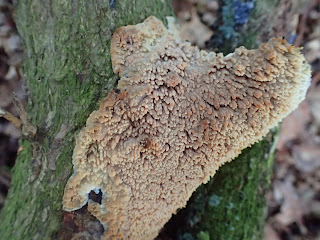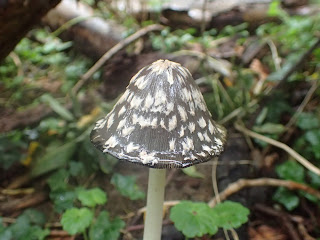10th October 2020
As with most groups, I have a list of fungi (albet in my head rather than written down) that I would like to see, taking in species such as Magpie Inkcap, Cobalt Crust and Devil's Fingers. I have looked for and failed to find Magpie Inkcap in the past, but a member of the fungus study group who had seen them previously at Wayland Wood very kindly went and checked this autumn and told me that some were fruiting. There were two potential problems - one being that this species quite quickly dissolves into an inky mess, and secondly that the weather at the weekend was forecast to be rainy.
We arrived at Wayland Wood and started searching the area of the woodland where Maureen had seen the Magpie Inkcaps. I then spotted the remains of an inkcap - were we too late? Fortunately not, as three more, this time in recognisable condition, were just a bit further over. It seemed to be a good year for this species, with many other posting pictures of them online.
We continued on a circuit of the woods, but the rain was getting harder and we were getting rather wet. Fortunately my daughter was quite happy, having found a Crystal Brain fungus on a stick and carrying it around to show it the woods. There was clearly quite a bit of fungi around, including Burgundydrop Bonnets and Blackening Russulas, but it was not a day for lingering so we made our way back to the car park to dry off.










































